Scents of Exile
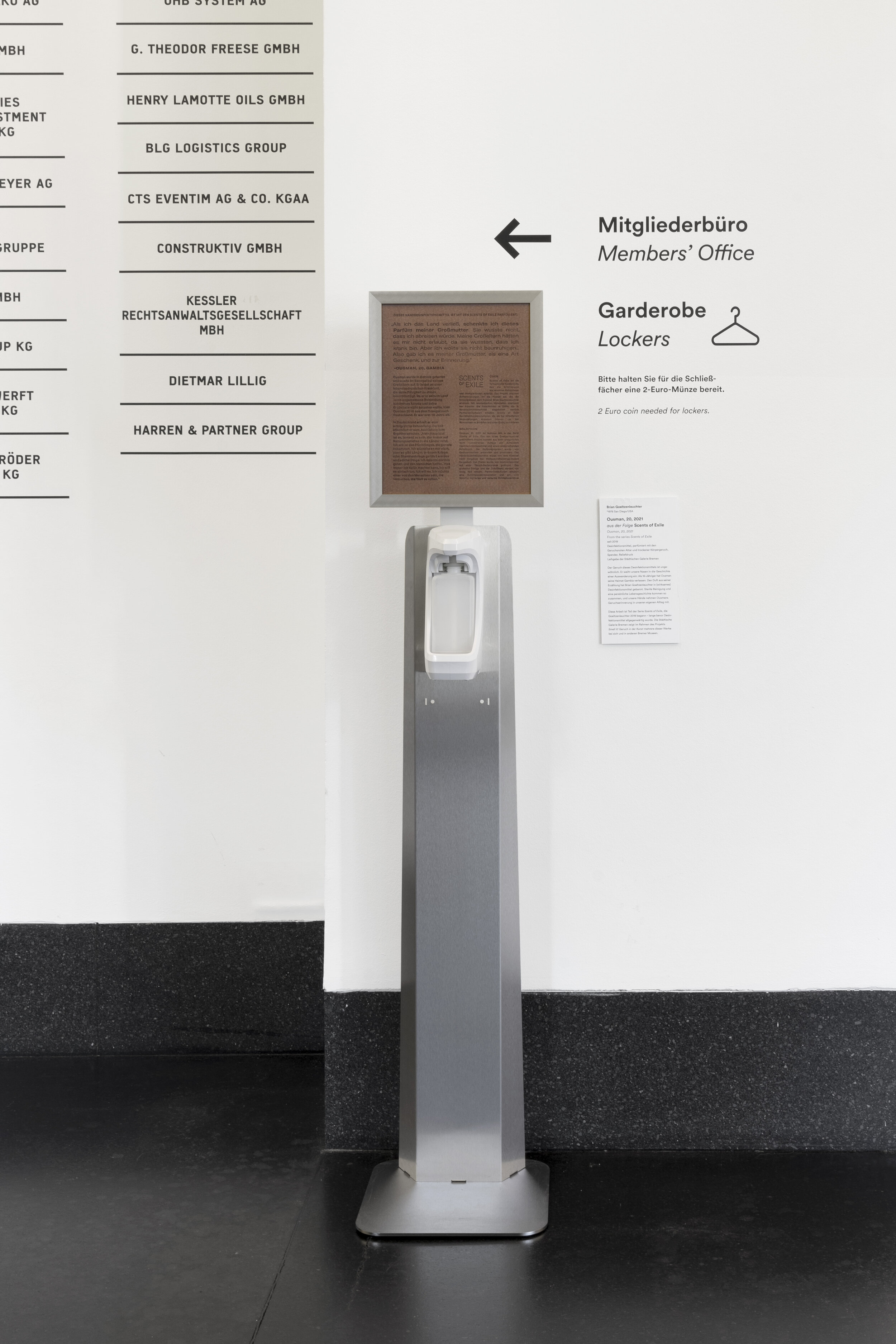

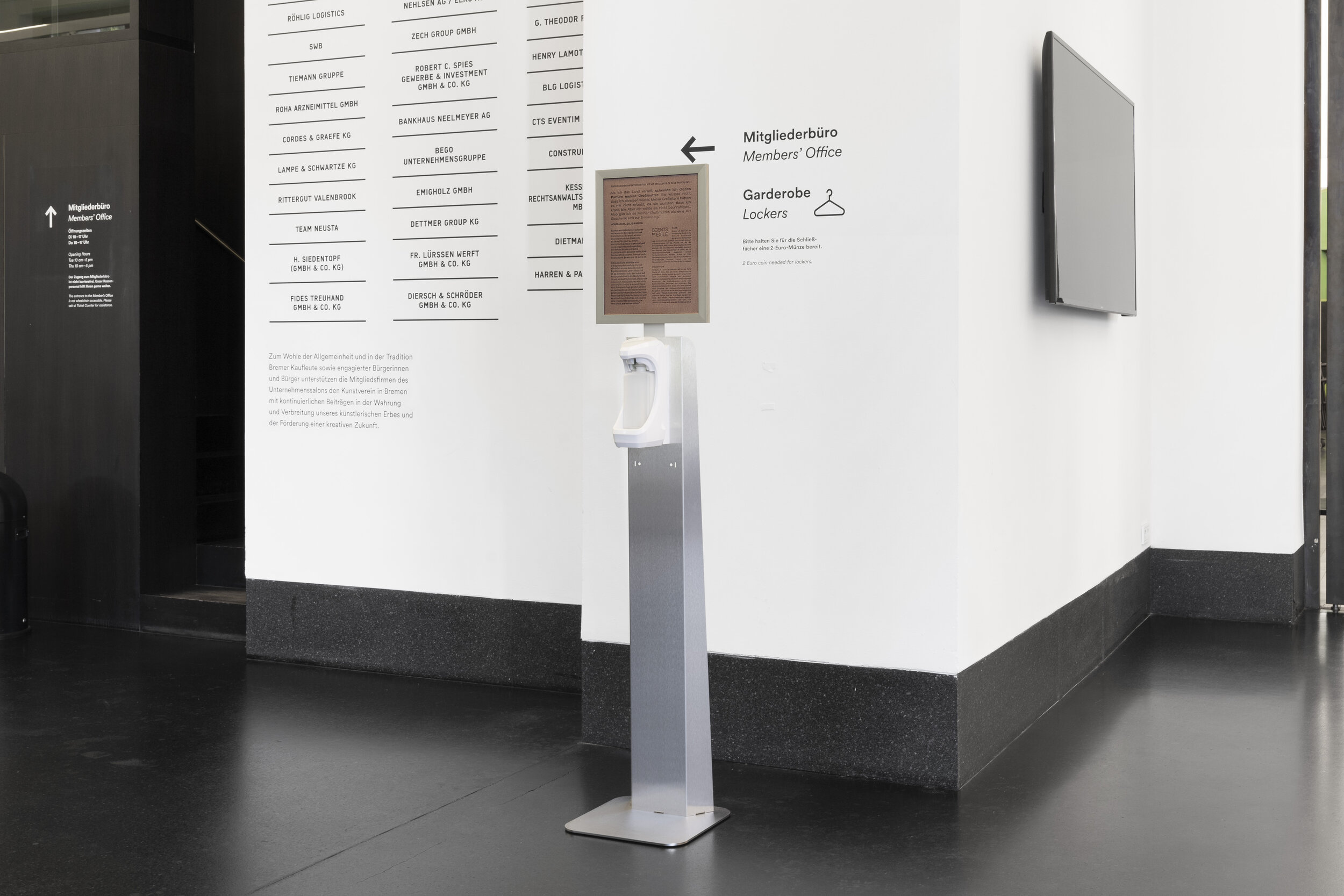
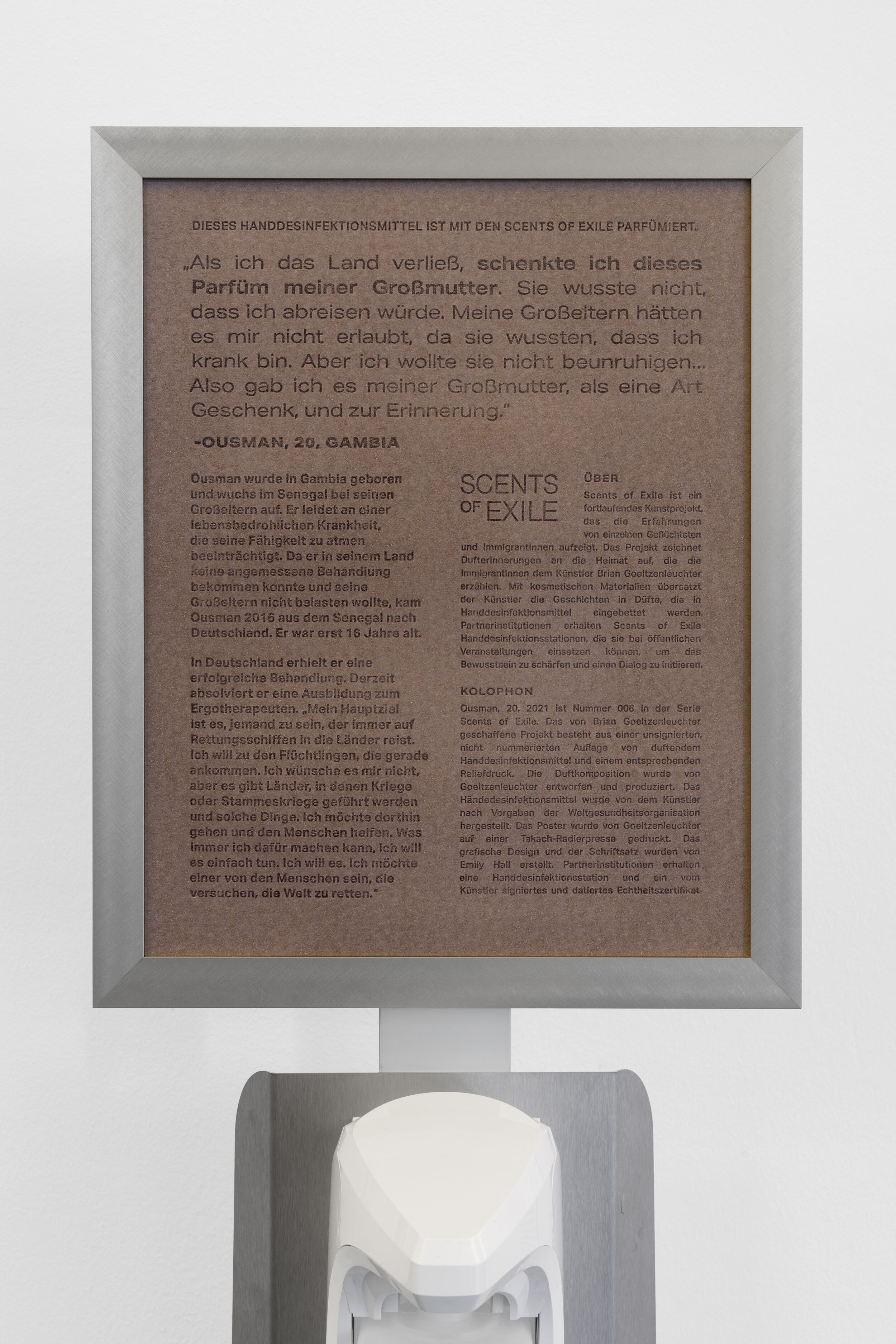

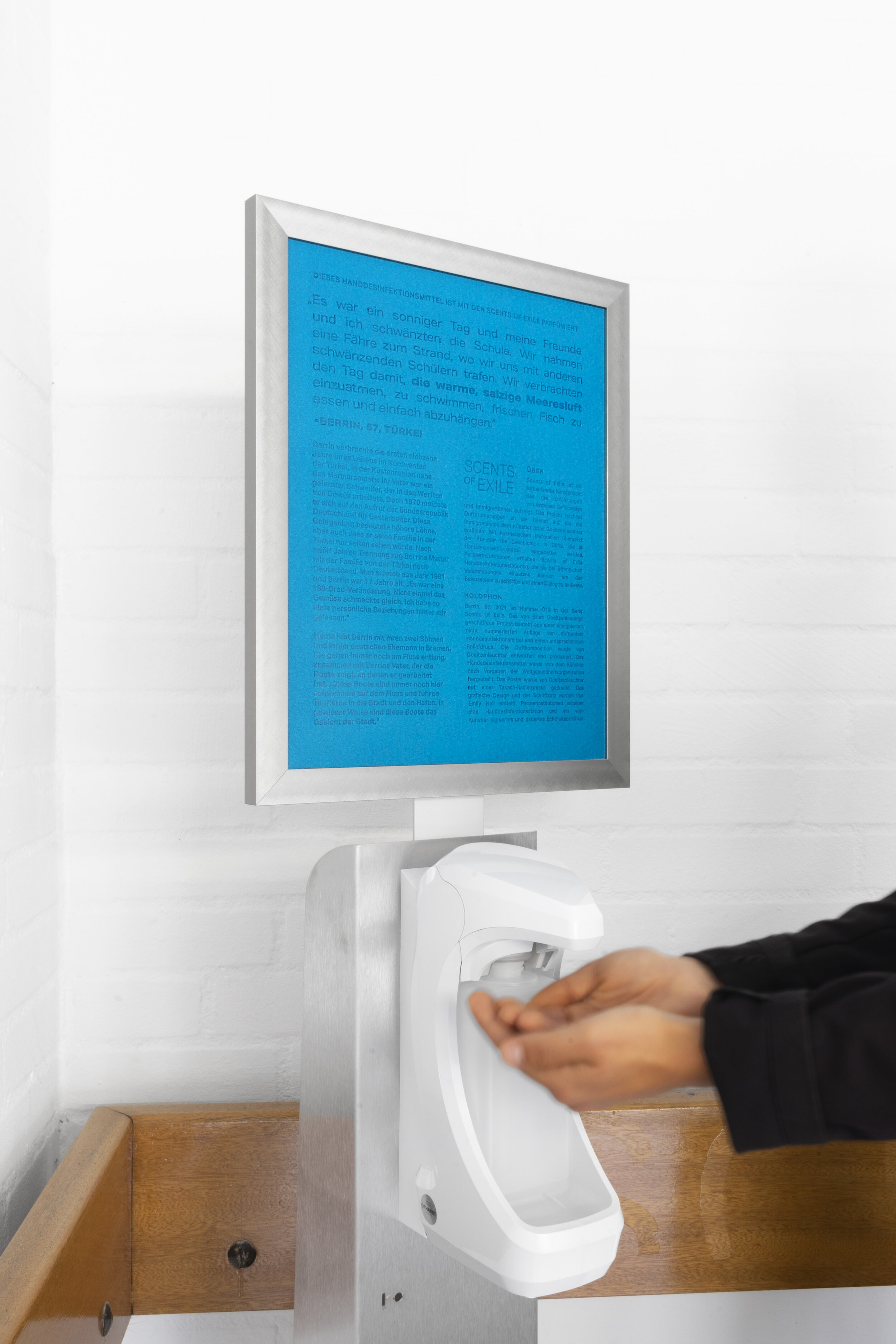



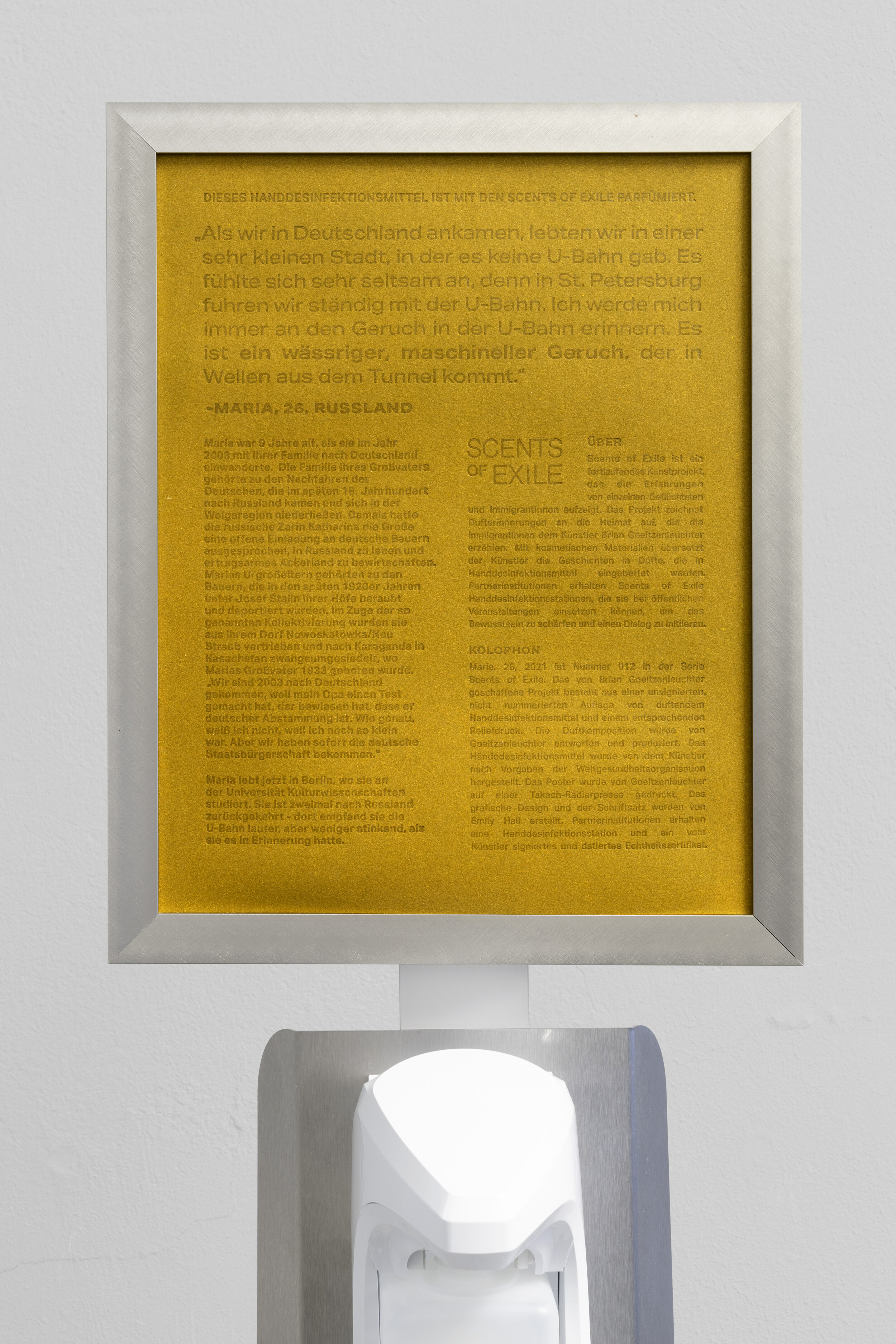
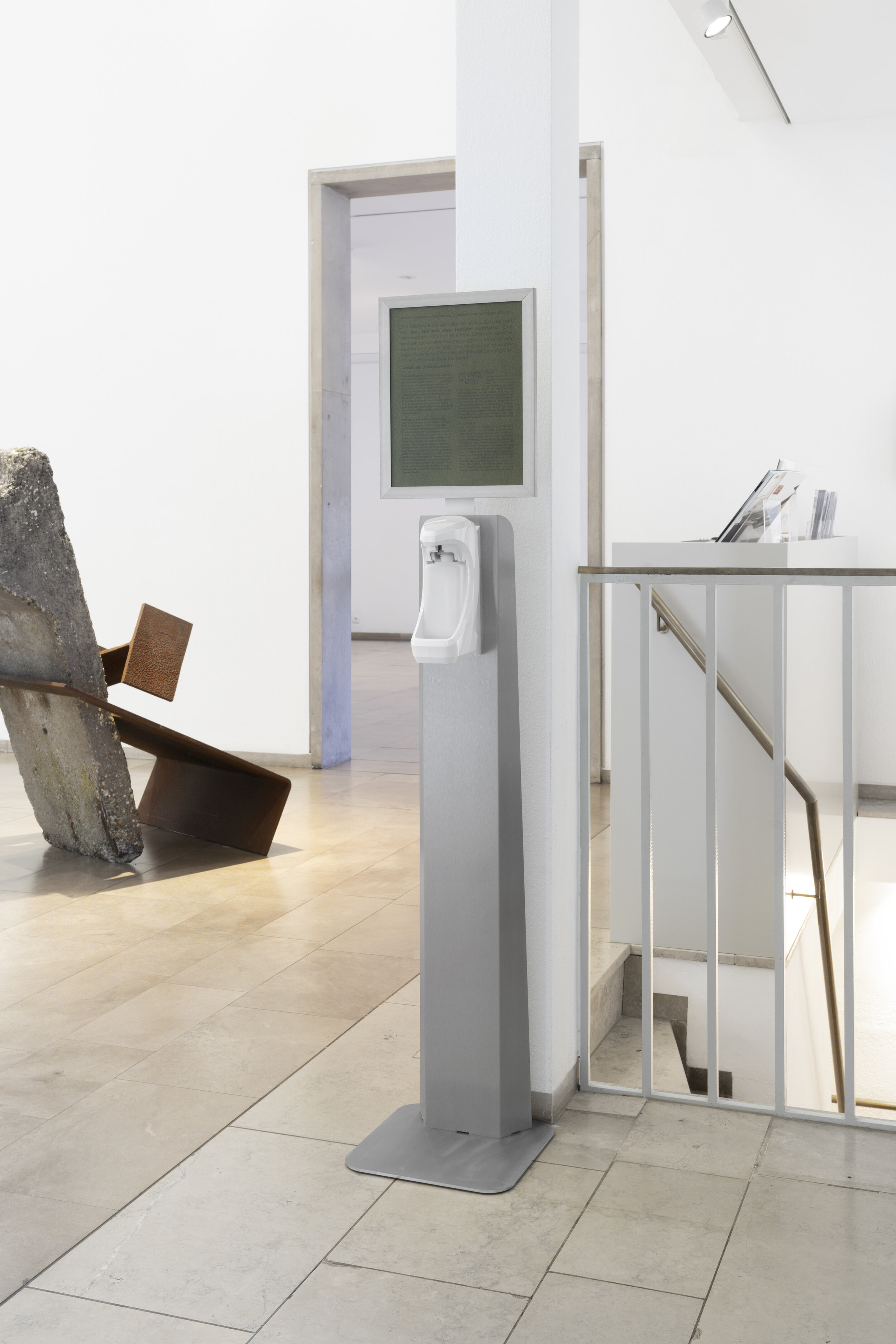
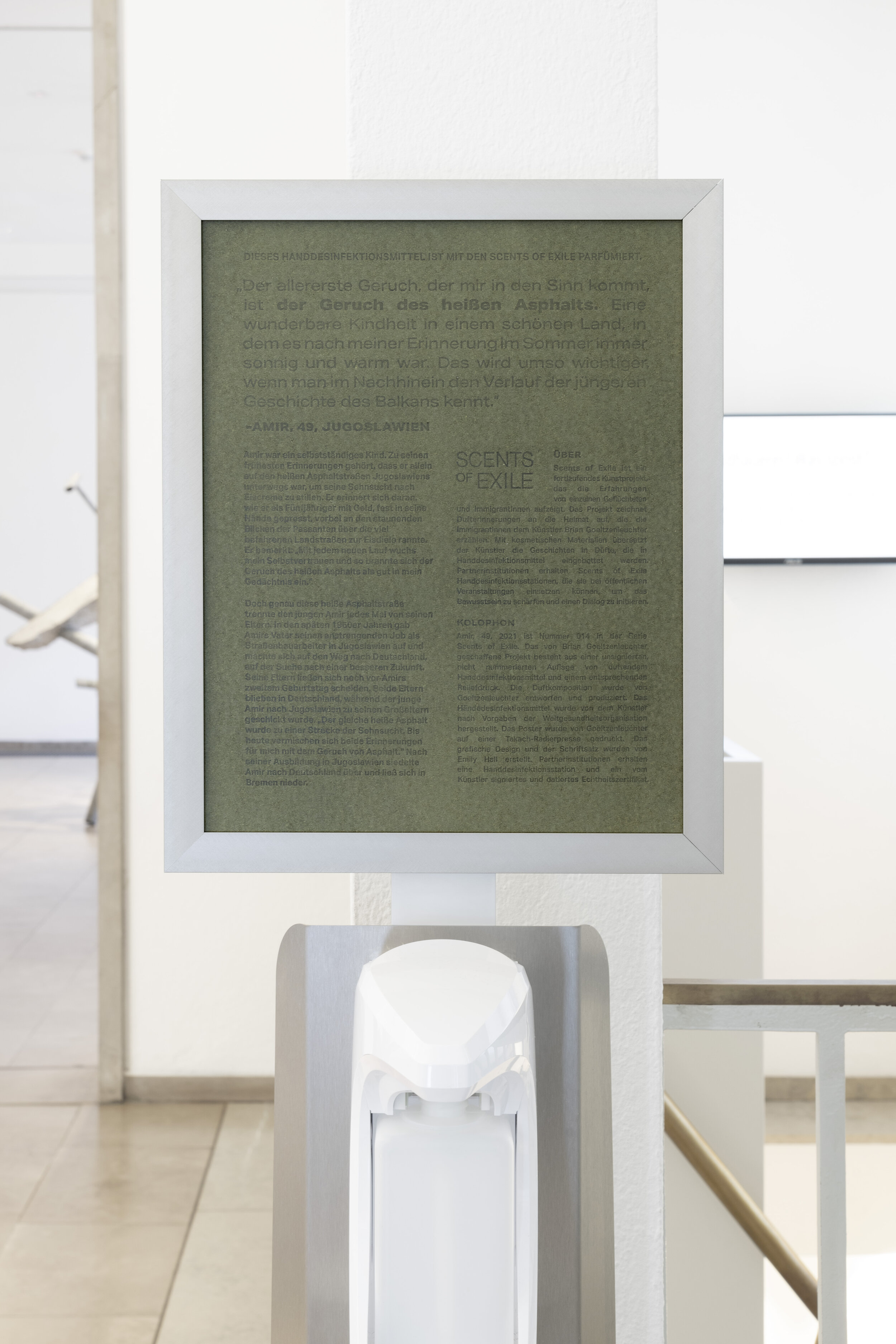

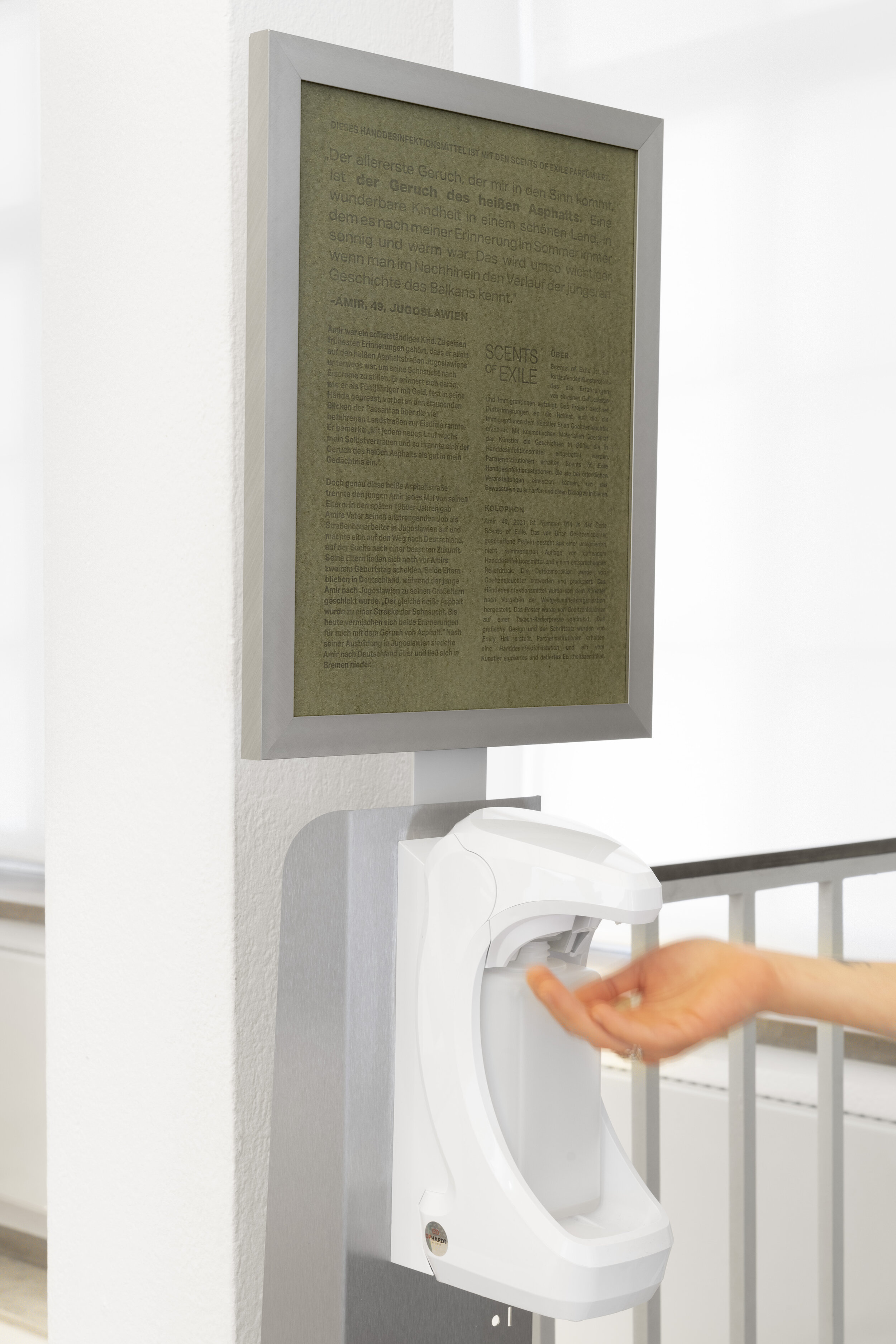


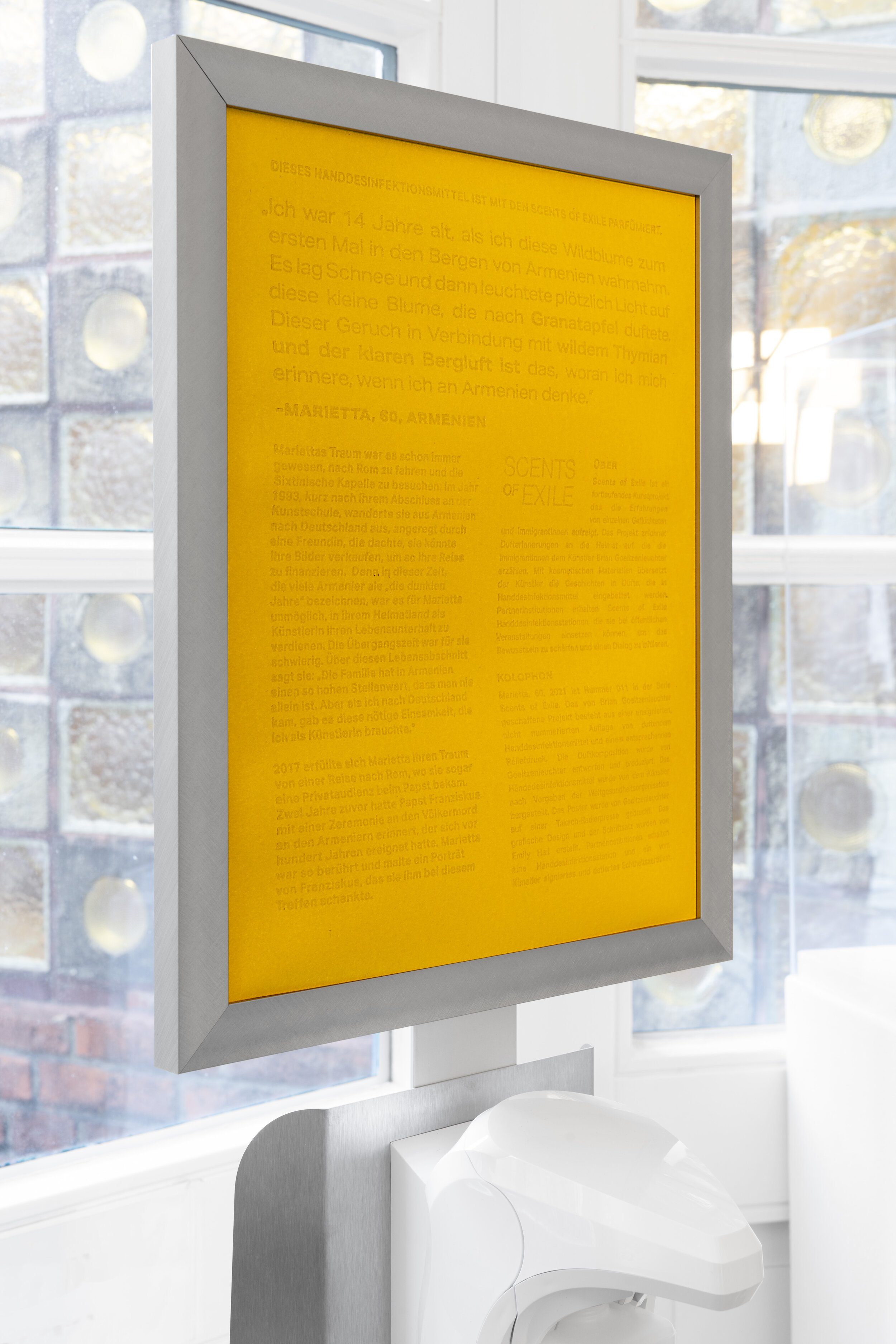

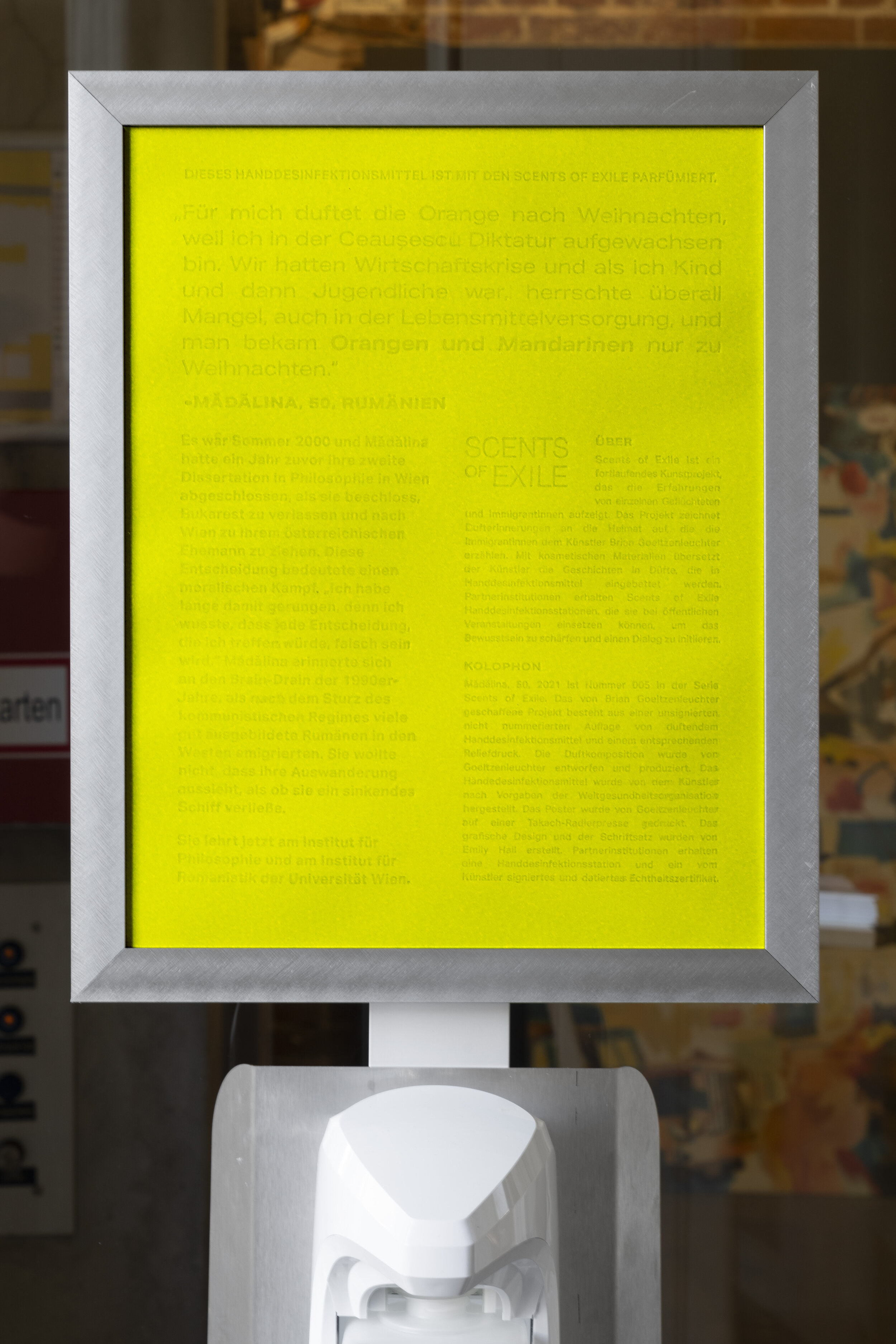
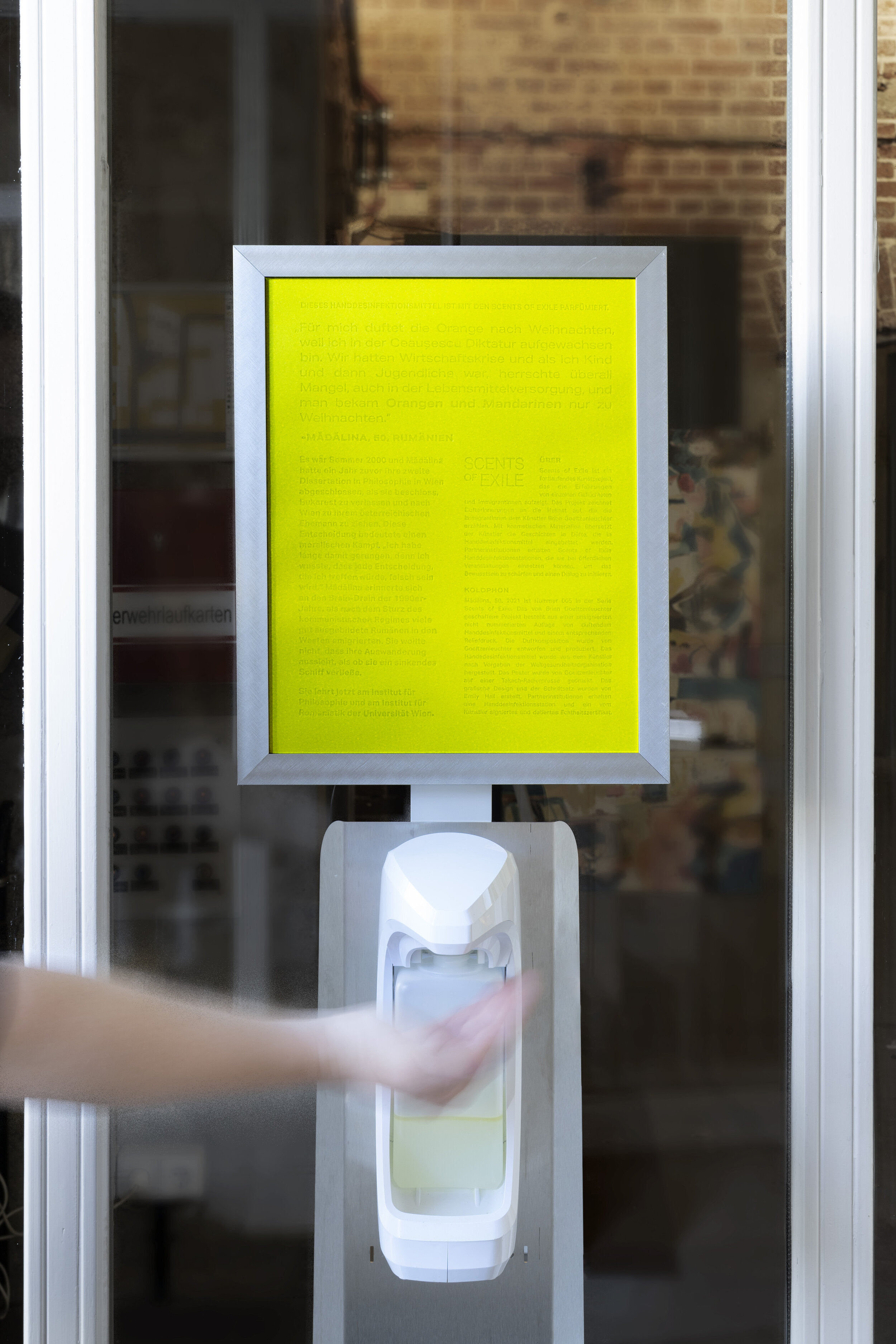


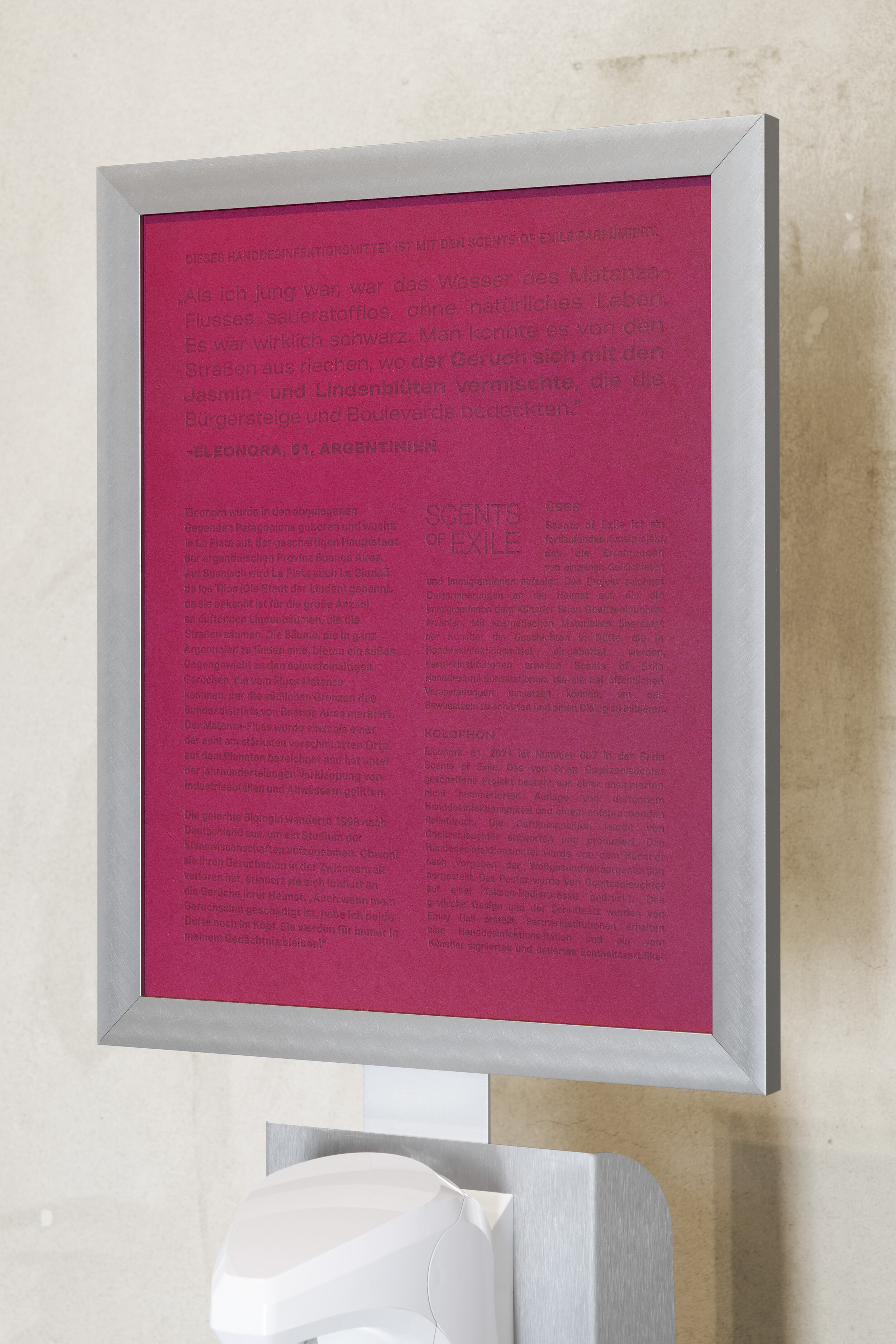
Scents of Exile, site views olfactory public artwork as installed at various museums and galleries, 2019-present. The project consists of a freestanding hand sanitizing dispenser, an unsigned, unnumbered edition of scented hand sanitizer, and a corresponding relief print.
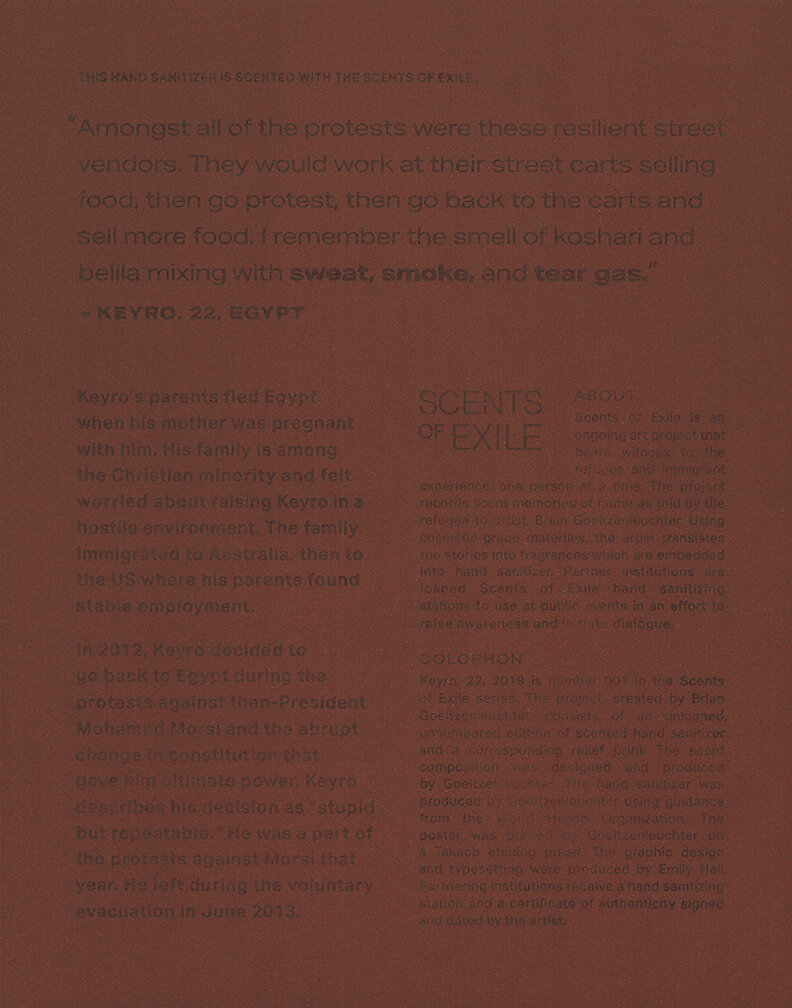
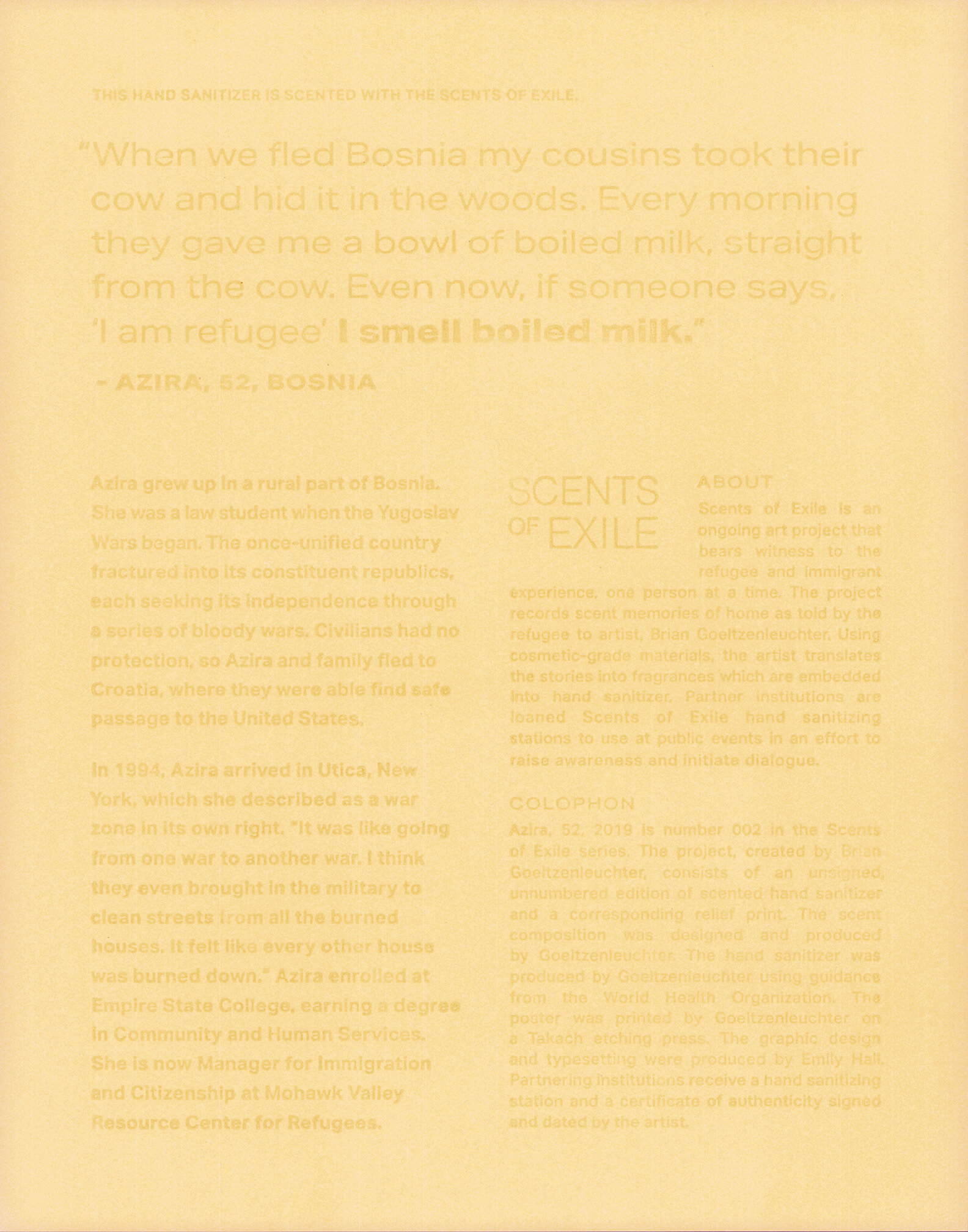
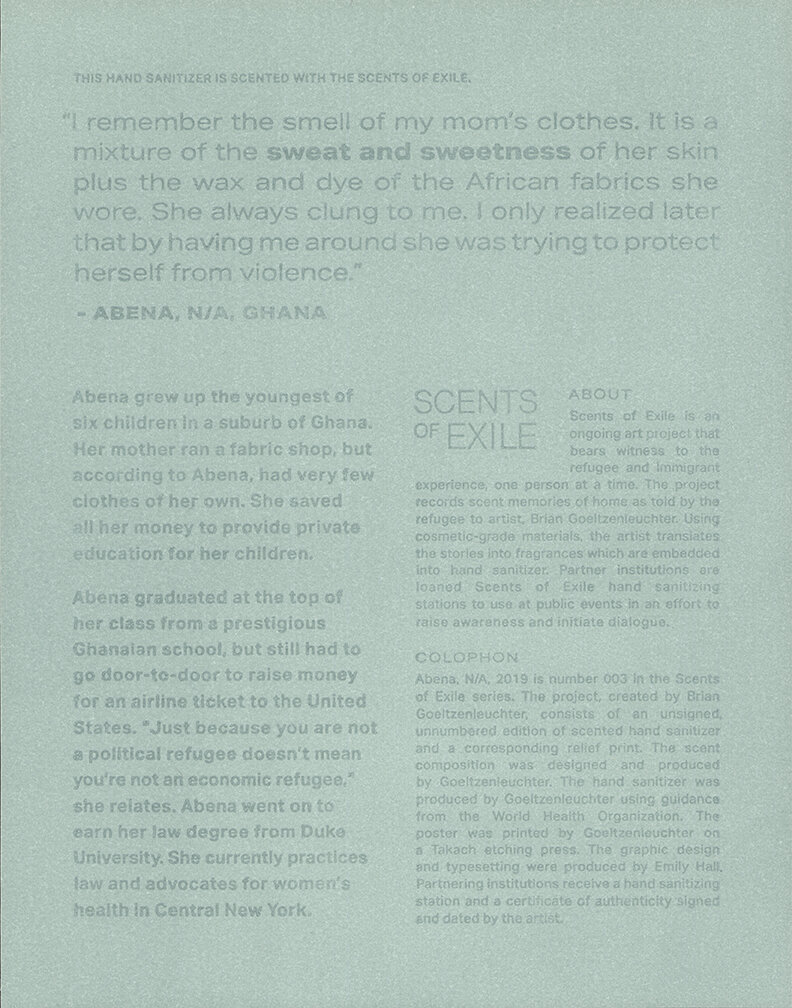
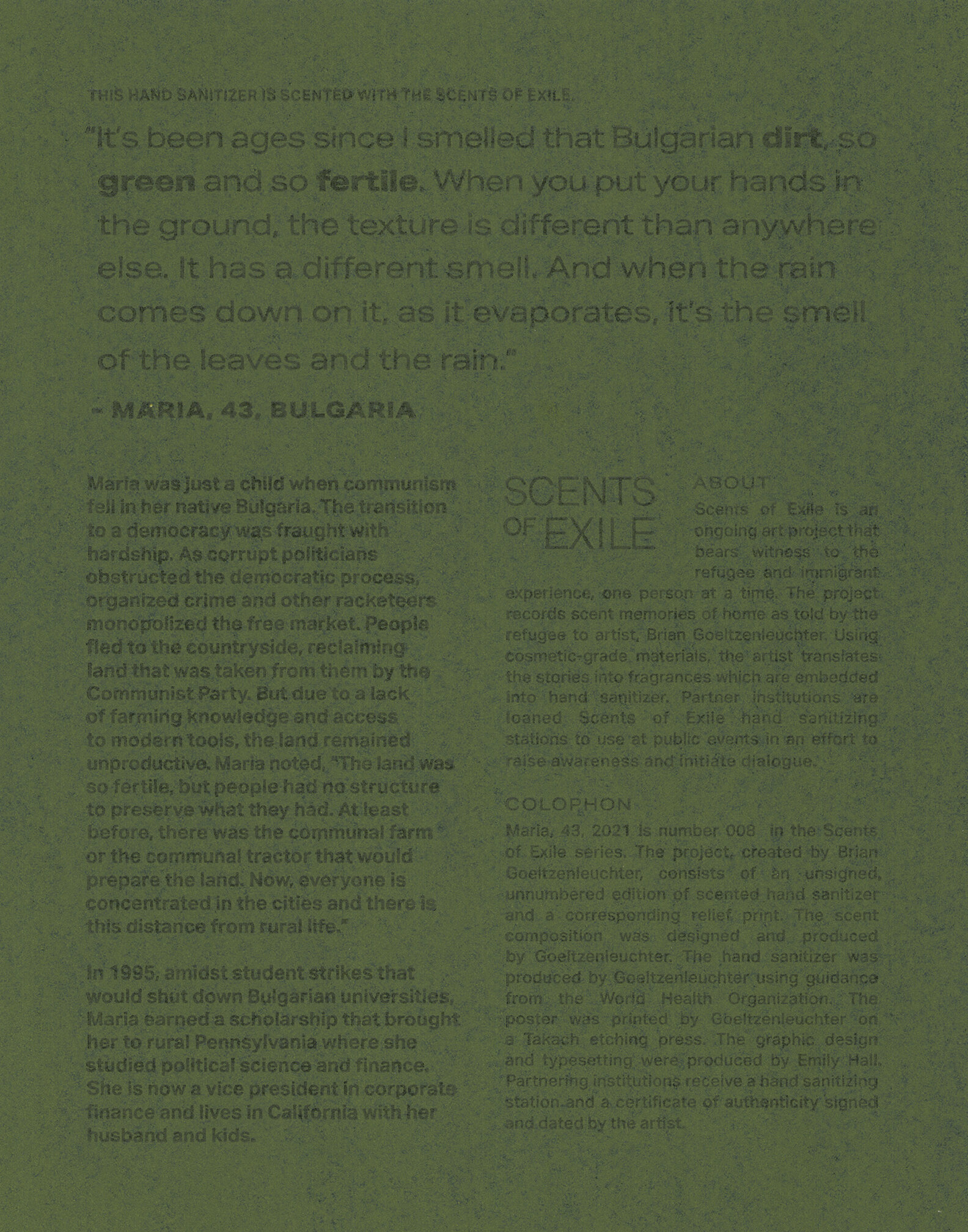
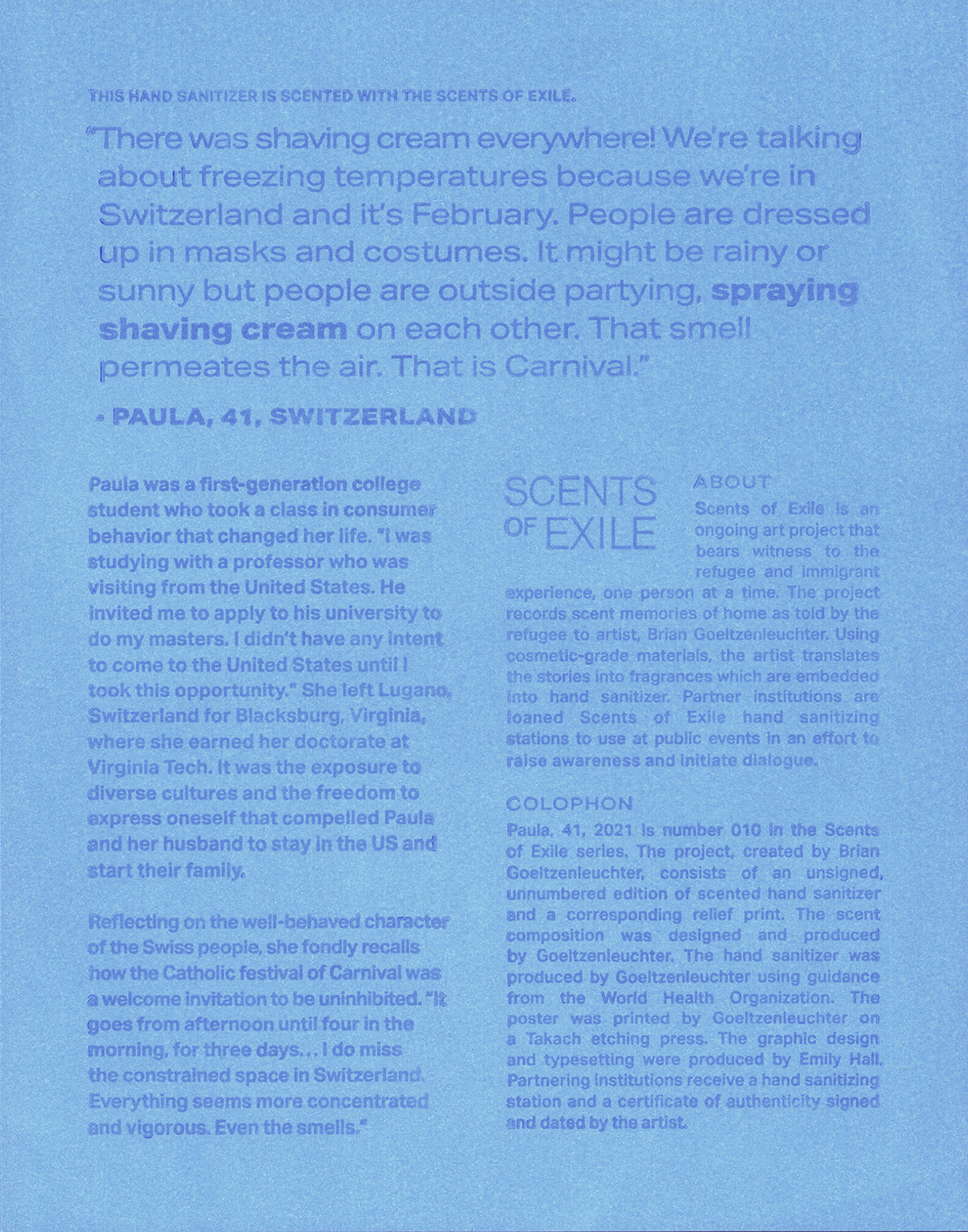
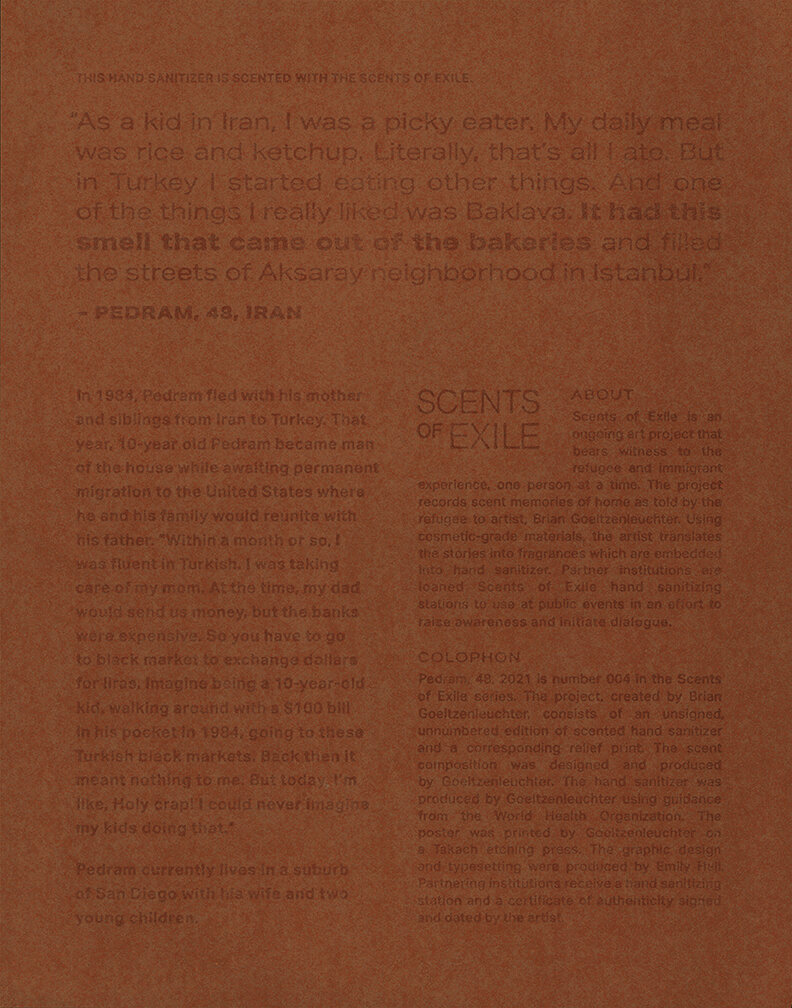
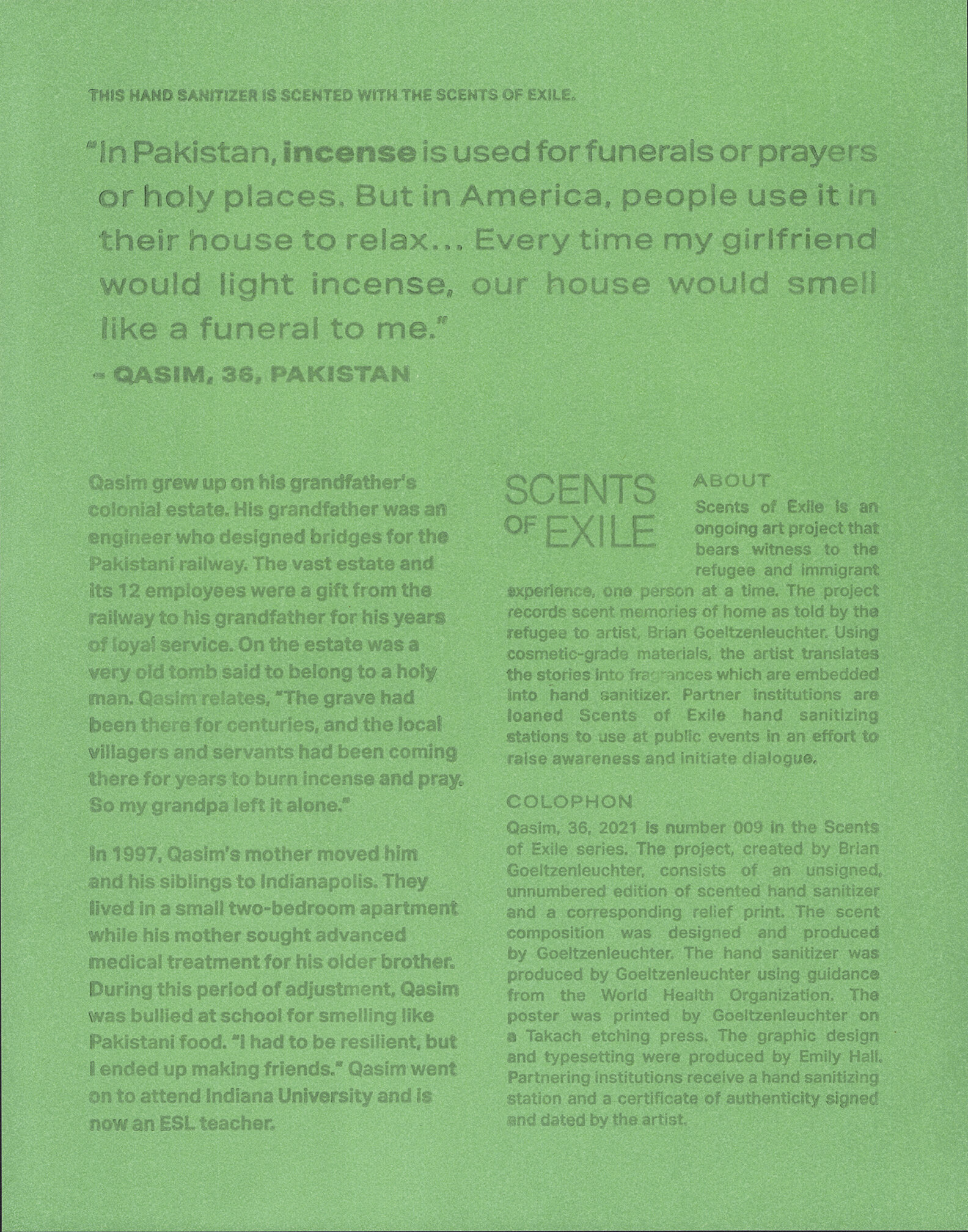
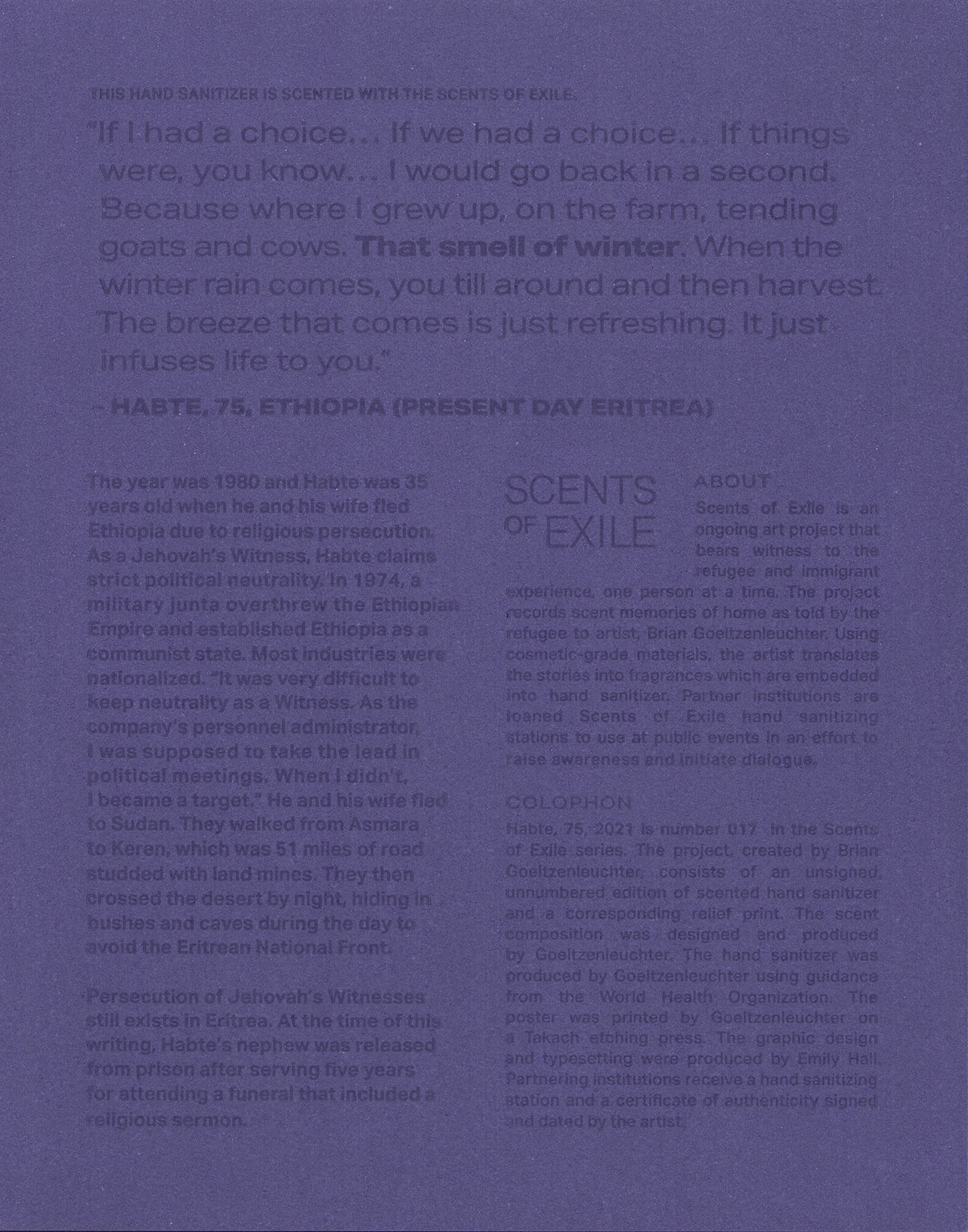
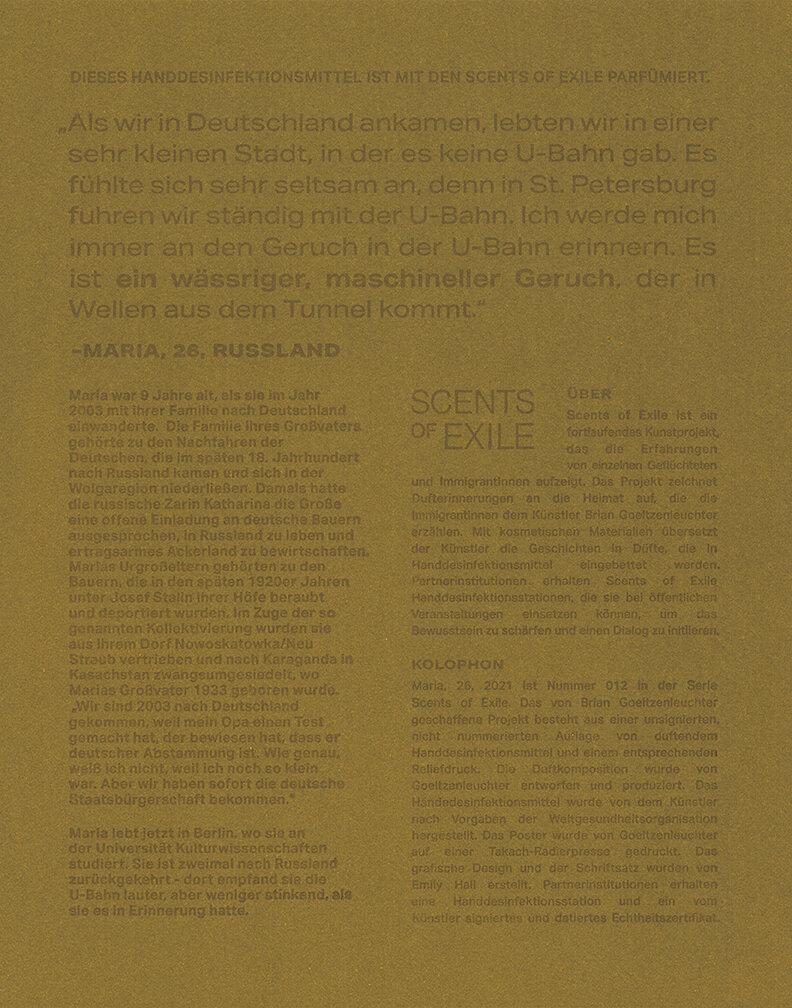
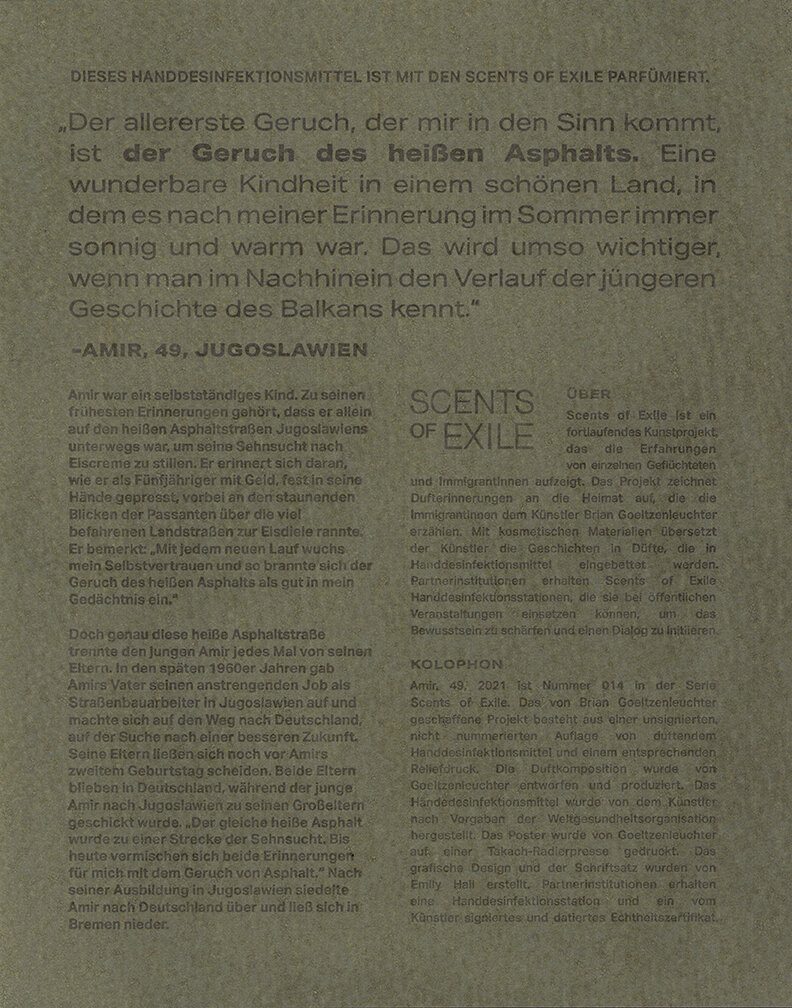
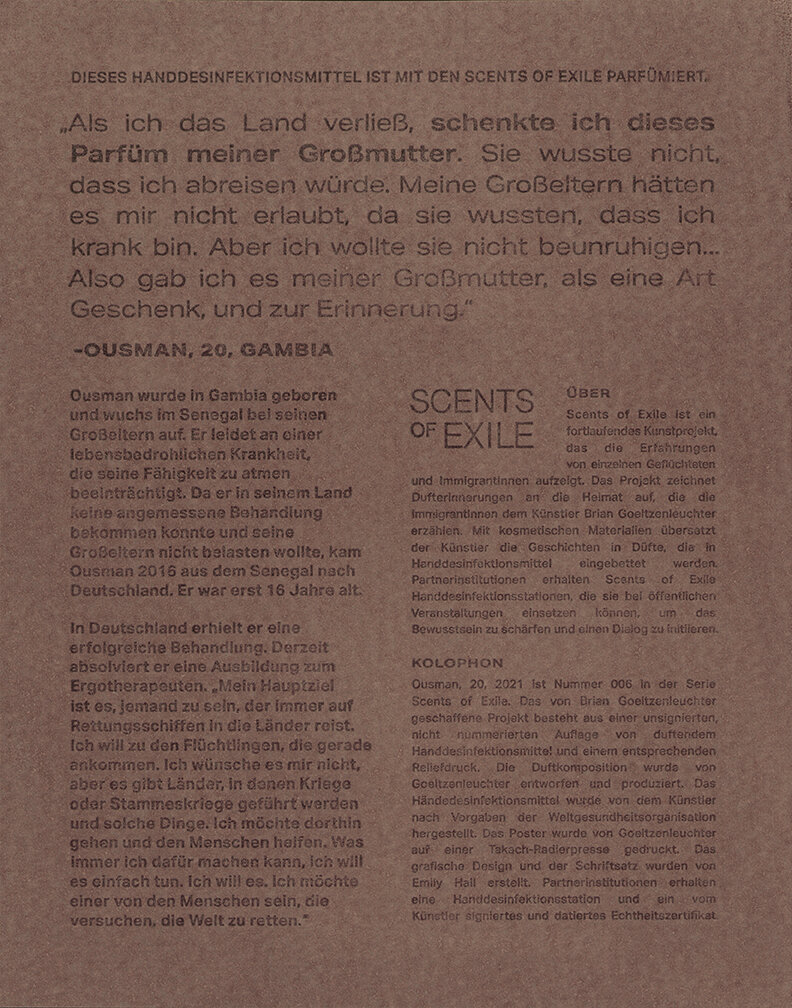
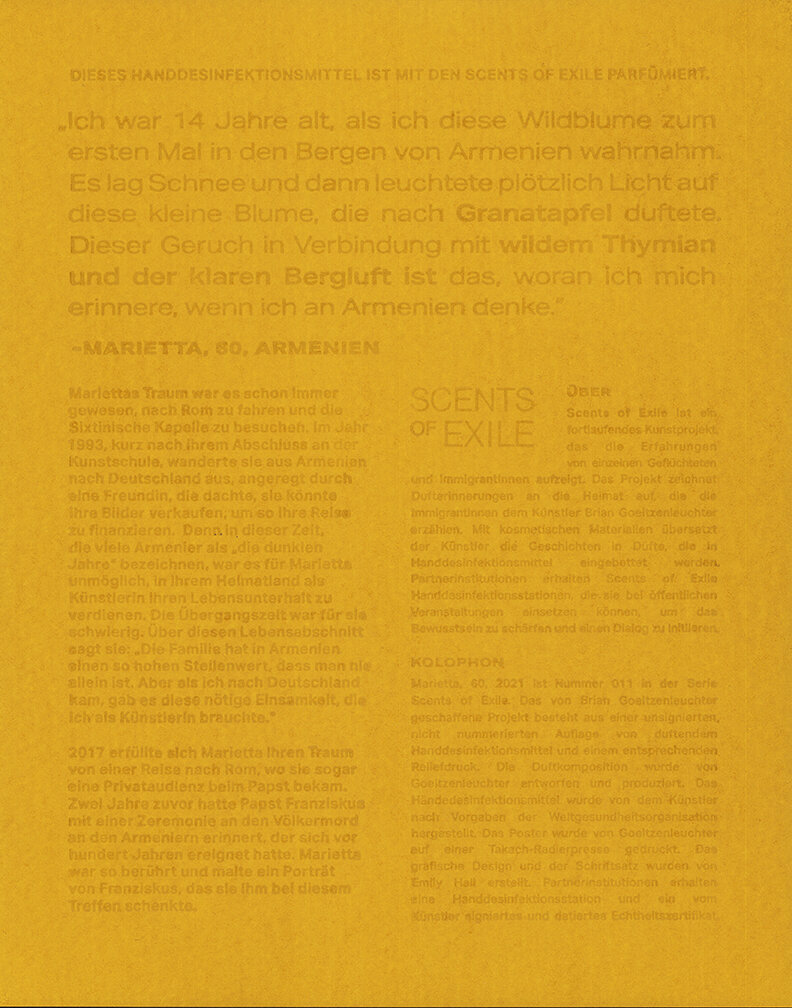
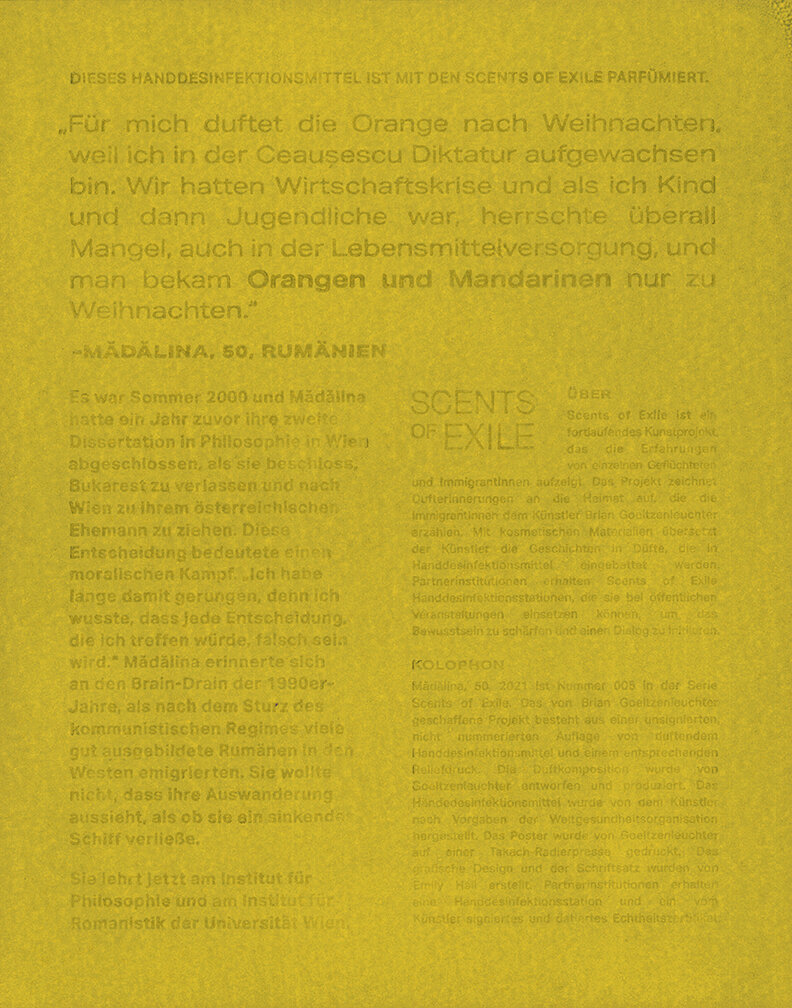
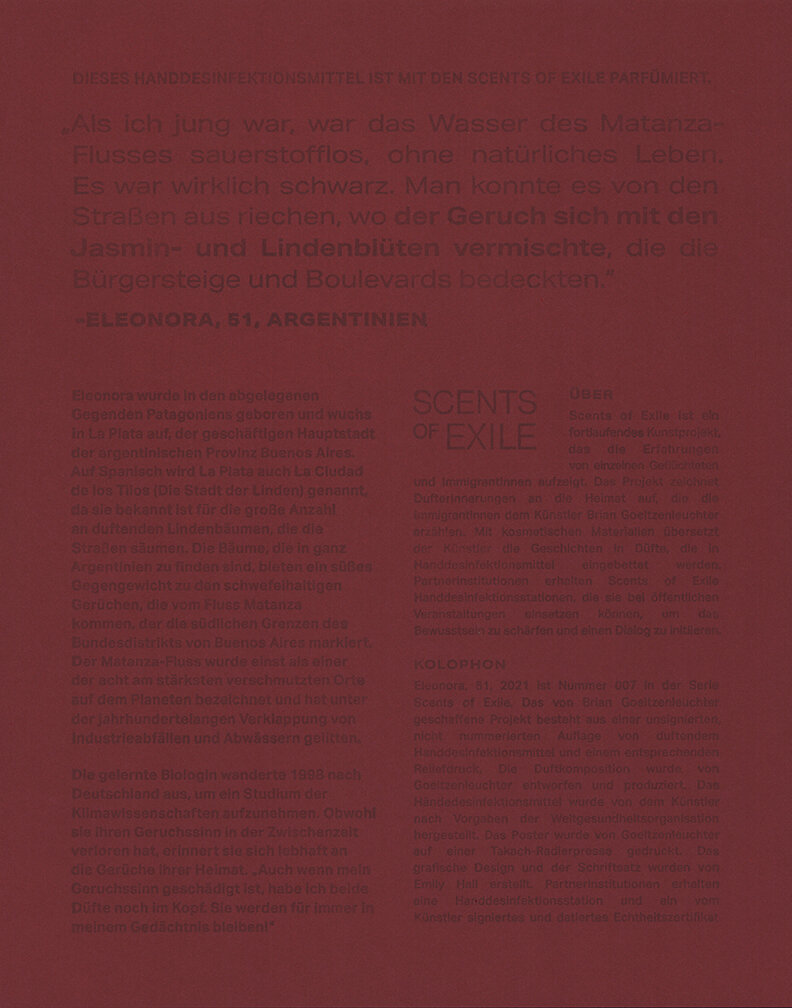
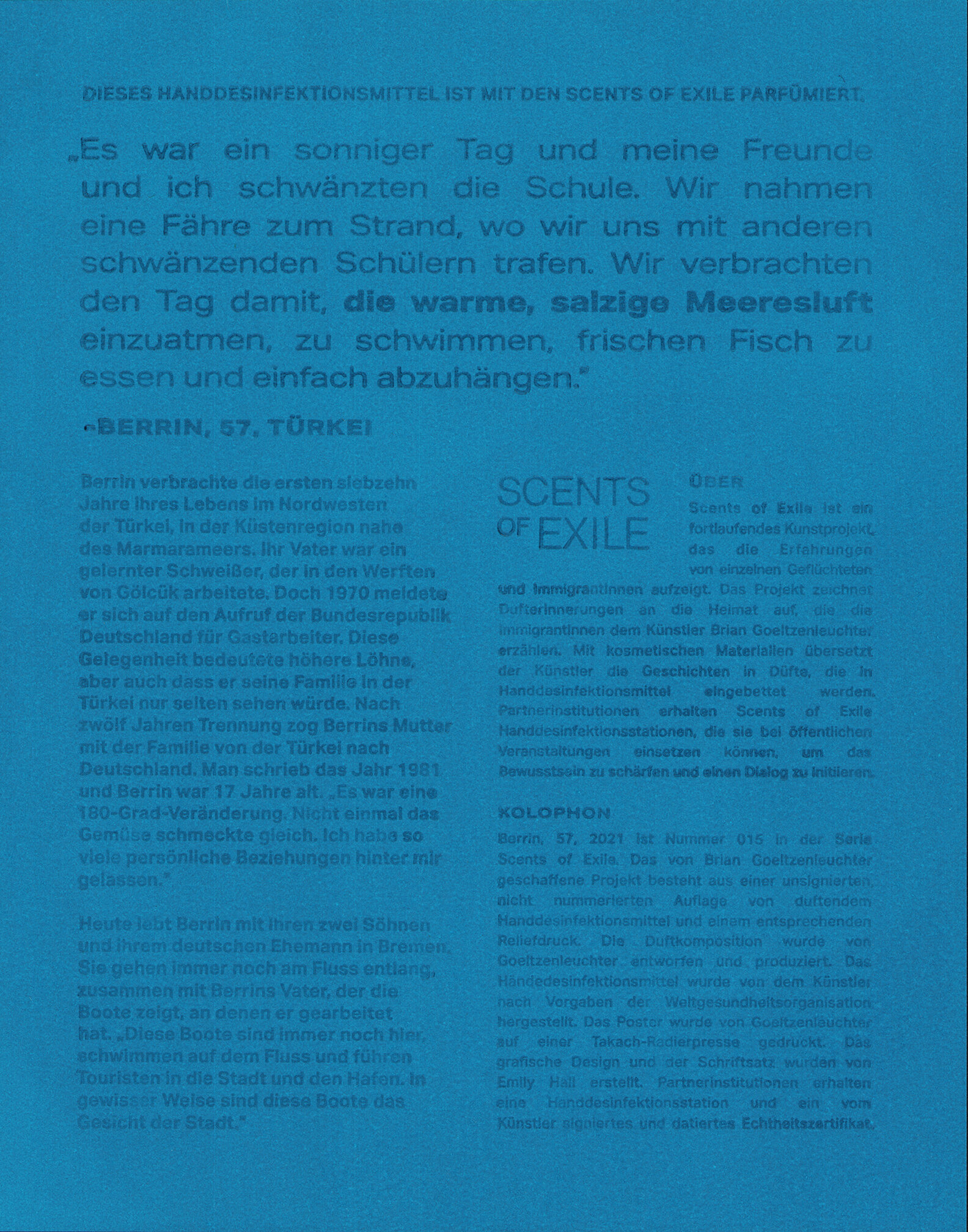
Details of Scents of Exile relief prints, rubber based ink on 118# cover, 14 x 11 inches, 2020-2021.
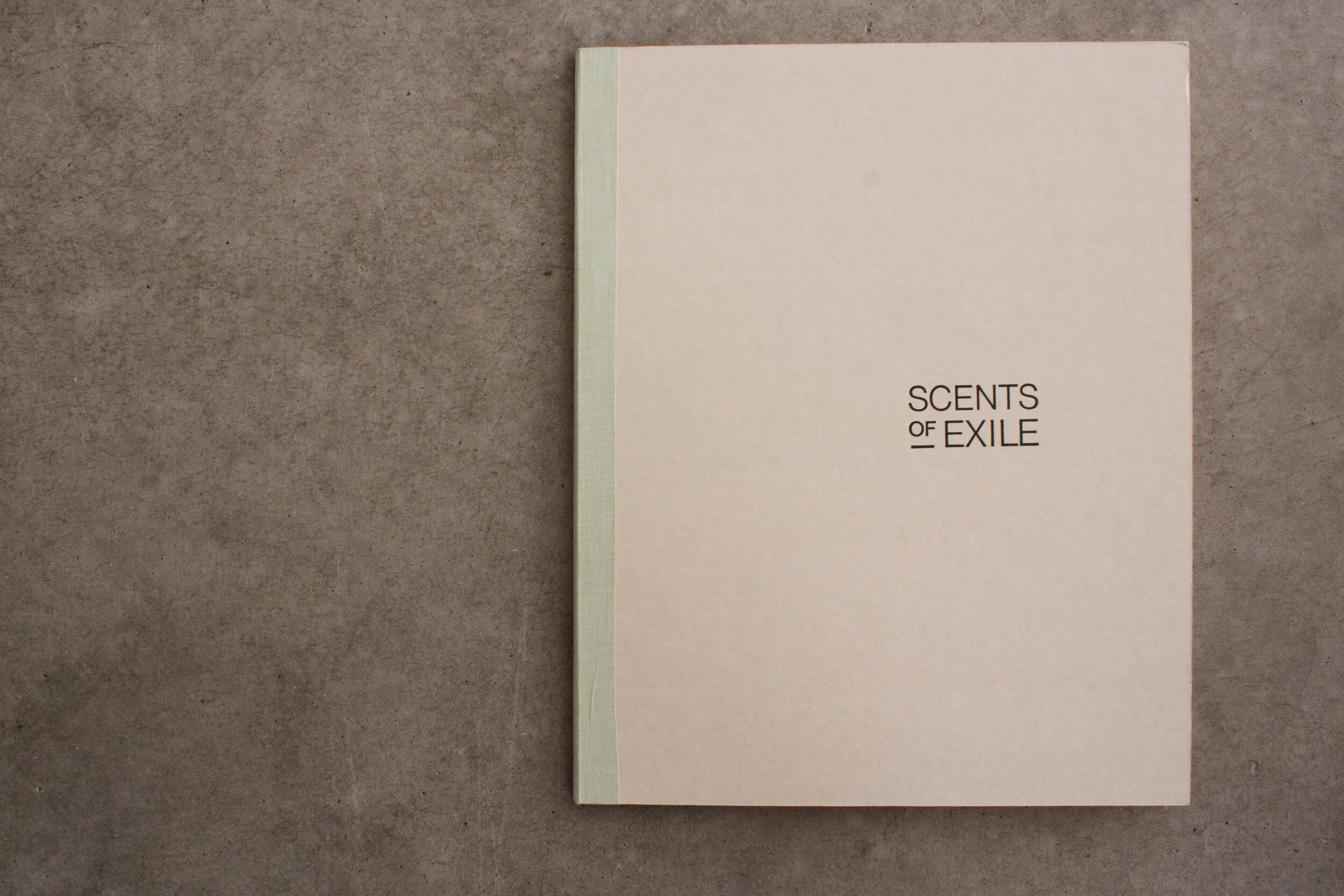
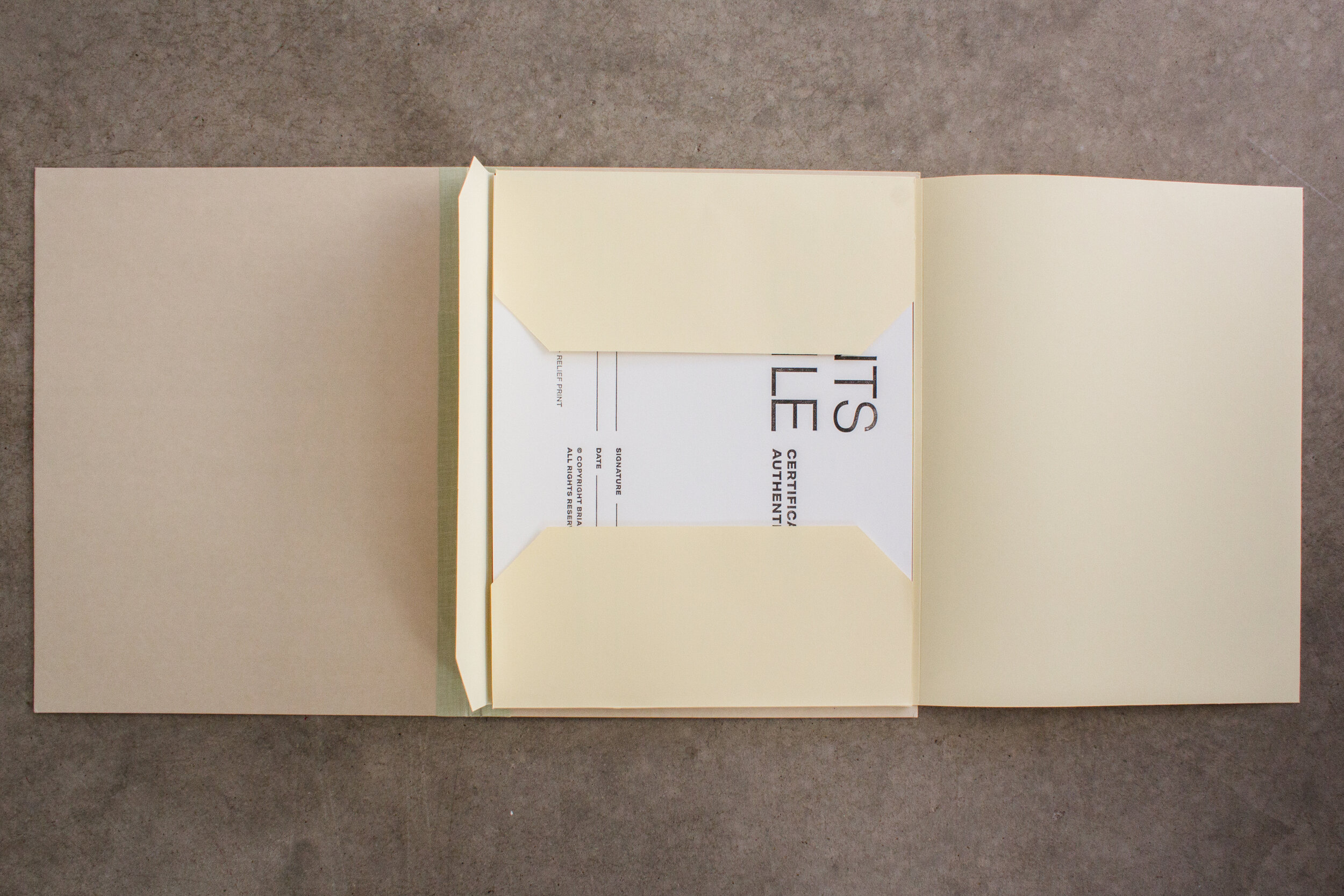
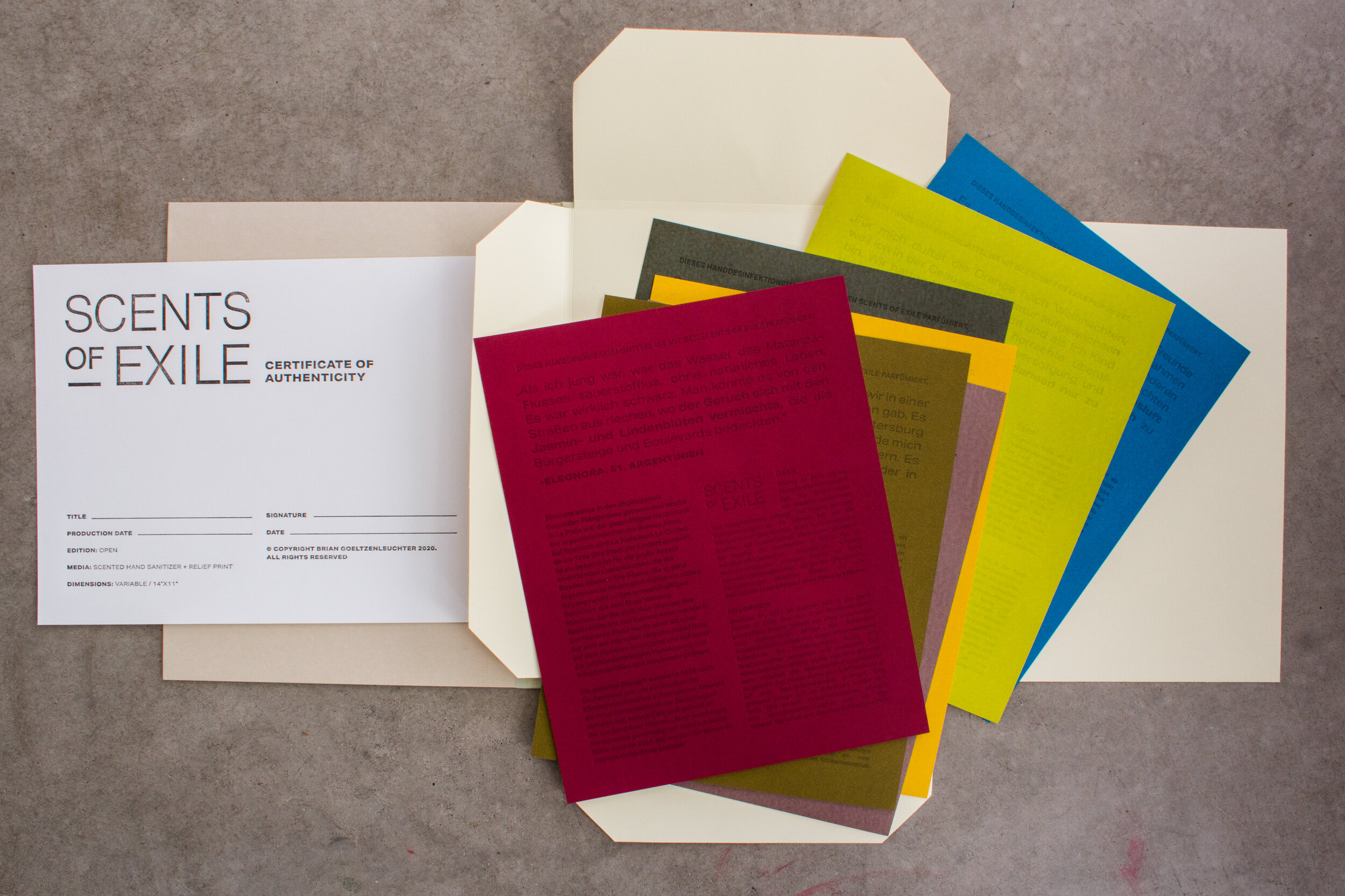
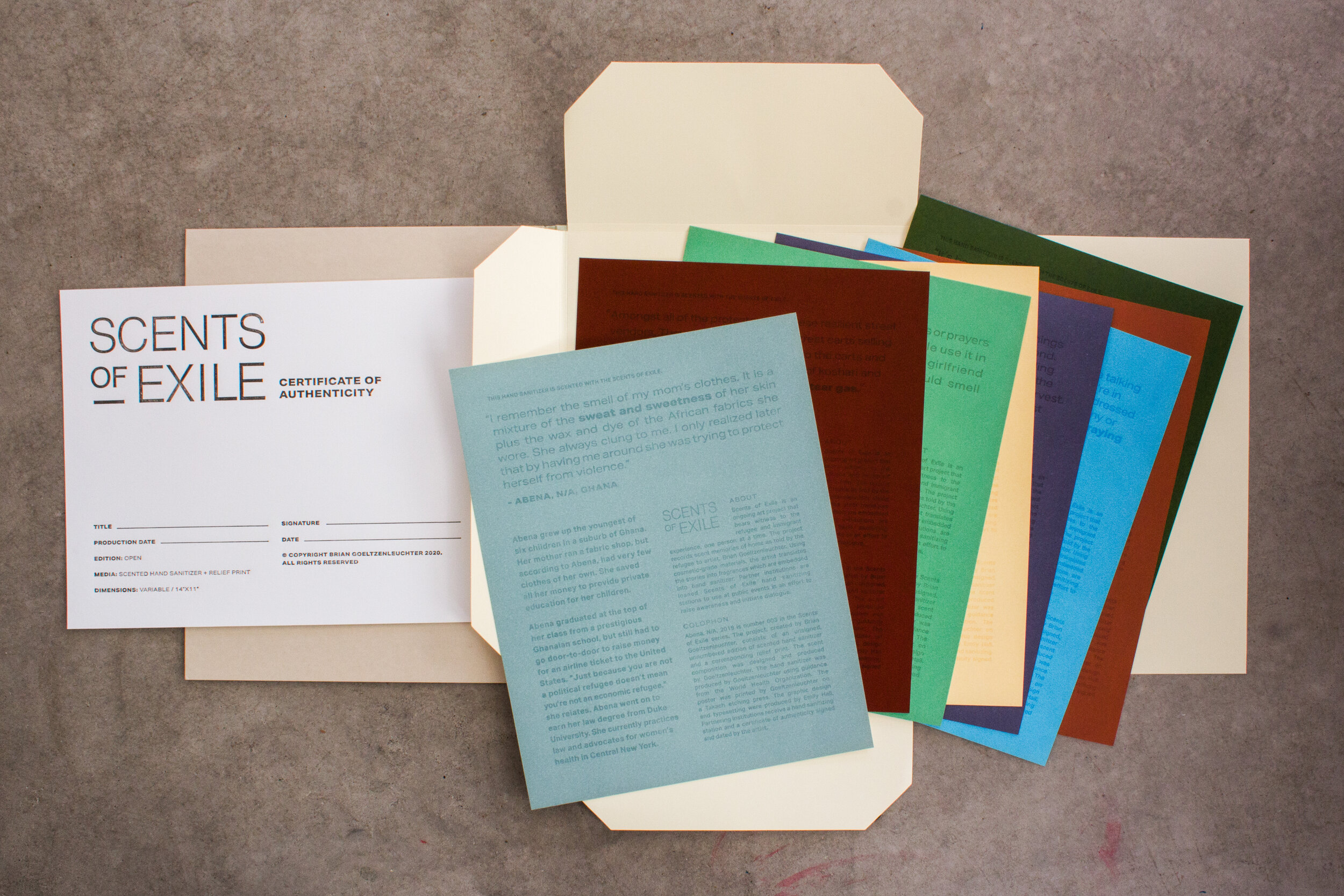
Details of Scents of Exile archive folios: United States, 2020-2021; Germany, 2021. Contents include document preservation binder, certificate of authenticity, 10 ml vials of hand sanitizer (not pictured), and a corresponding edition of prints. Partner institutions receive a certificate of authenticity signed and dated by the artist. For more information, visit: scentsofexile.com
Project Notes
Scents of Exile is an ongoing social practice and olfactory art project by Brian Goeltzenleuchter that explores the intersections of scent, memory, identity, and displacement. From 2019 to the present, Goeltzenleuchter has interviewed refugees and immigrants, inviting them to describe the smells they associate with home. These personal recollections are then translated into artist-made fragrances that act as material archives of cultural memory and longing. These fragrances, composed of cosmetic‑grade materials, are then embedded in hand sanitizer and dispensed via public sanitizer stations. Each station includes a printed summary of its subject’s story. When visitors sanitize, they absorb the scent memory, becoming part of the artwork itself. The project, exhibited in museums, galleries, universities, and hospitals across multiple countries, positions scent as both medium and metaphor for exile: elusive, intimate, and deeply tied to memory.
Critically, Scents of Exile positions olfactory art as a corrective to dominant representational paradigms. Where statistics and policy discourses render displacement abstract, Goeltzenleuchter’s archive restores intimacy and singularity. It insists on the embodied dimensions of exile while honoring the resilience of memory as cultural inheritance. In doing so, the work aligns with broader contemporary art practices that question the authority of traditional archives and foreground marginalized voices. Scents of Exile thus emerges as both a repository and a performative act: an archive that breathes, disperses, and lingers.


